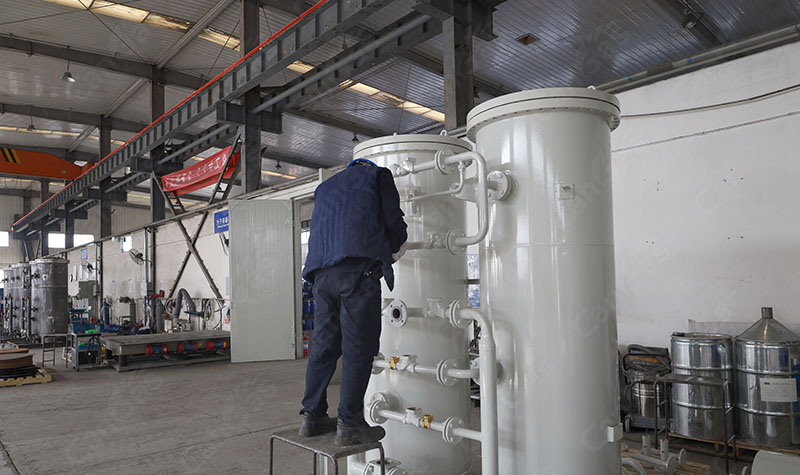Unveiling the Mystery: Why Do PSA Nitrogen Generation Systems Have Varying Service Lives?
ReturnIn the industrial sector, PSA (Pressure Swing Adsorption) nitrogen generators have become mainstream nitrogen production equipment due to their efficiency, environmental friendliness, and low cost. However, all equipment inevitably experiences wear and tear during operation. Depending on the extent of this degradation, even PSA nitrogen systems with identical models and configurations may exhibit differences in service life. How to fully leverage the performance of PSA nitrogen generators while ensuring their normal service life is the focus of this discussion.
I. Factors Contributing to Equipment Degradation
PSA nitrogen generators undergo degradation primarily through the following mechanisms:
● Mechanical Wear and Tear: Prolonged operation intensifies friction between components, accelerating mechanical degradation.
● Electrical Component Aging: Extended operational environments cause electrical parts to deteriorate and lose performance.
● Filter Blockage: Impurities and particulates in raw gas accumulate on adsorbents, reducing filter efficiency.
● Environmental Impact: Harsh conditions such as high temperatures, humidity, and corrosive gases accelerate aging and damage.
● Operational Practices: Improper or unskilled operation by staff can lead to premature wear or damage.
● Usage Frequency: Frequent start-stop cycles and continuous long-term operation impose additional strain.
● Management Levels: The quality of equipment management directly influences its lifespan.
II. Strategies to Mitigate Degradation
To address these issues, the following measures can reduce equipment degradation in PSA nitrogen systems:
● Optimize Equipment Design: Use wear-resistant materials and refined structural designs to minimize mechanical wear.
● Routine Maintenance: Implement structured maintenance plans, including regular inspections and timely replacement of aged or degraded electrical components.
● Filter Maintenance: Clean or replace filters as required to ensure adsorbent performance remains optimal.
● Standardized Operation: Ensure operations are conducted by trained professionals adhering to standard procedures.
● Stable Operational Conditions: Install equipment in well-ventilated areas and strictly control parameters like temperature and pressure to avoid fluctuations.
● Enhanced Management: Scientific management systems and rational usage planning reduce abnormal equipment wear.
In reality, equipment maintenance, operational practices, and service life are closely interconnected. Tailoring usage to specific conditions and avoiding unnecessary strain are critical to extending equipment life. Industry practice confirms that prioritizing maintenance and care is a key pathway for enterprises to improve economic efficiency.


